Jessica, who is from Santiago, was still on vacation whilst we were there but decided to come to Valparaiso with us!
Valparaiso is a frenetic port city built on hillsides with a maze of steep streets, alleys and 'escaleras' (stairways) piled high with colourful, crumbling mansions
. There are 15 rattling ‘ascensores’ (funiculars) built between 1883 and 1916 that crank you up into the hills. Bright public street-art adorns the city. In the late 1800s, Valparaiso was the stopover for foreign vessels including whalers, and the export point of Chilean wheat destined for the California gold rush. The opening of the Panama Canal in 1914 saw the city’s decline. Today its main purpose is tourism and as a cruise-ship stop-off due to its award of Unesco World Heritage status. The city has also housed Chile’s government since 1990 – an unsuccessful attempt to control population growth in Santiago.
Impressed with the ‘Free’ Walking Tour in Santiago, we joined another in Valparaiso. This walk took us up into the hills where we walked along steep cobbled streets lined by traditional 19th-century houses with painted colourful corrugated-iron facades, and good views across the port. Around the corner from our hostel was Plaza Sotomayor, dominated by the palatial, blue Naval Command Building
.
In the afternoon we visited the beautiful Isla Negra (not an island). Built by the poet Pablo Neruda in the 1950s, this was his favourite house. The layout of his home is long and thin reflecting the outline of Chile, and many of its features resemble a ship. It is spectacularly set on a windswept ocean headland and some of Neruda’s best work was written here. The poet was obsessed with the sea, but scared of the water. He placed a boat in the gardens of his house and would happily sit in it with an aperitif, looking out to sea, imagining he was sailing! The house includes extraordinary collections of ships in bottles, nautical instruments, wood carvings and shells. Pablo Neruda was a hoarder! The poet is now buried in this location – he died of cancer days after the 1973 military coup. Some say the idealist Neruda died of a broken heart as his country fell under General Pinochet’s dictatorship. Wandering around his home, we were mesmerised by the place and its setting – it was simply wonderful.
Onward bus to Talca, 7hrs.
'Valpo'
Monday, March 03, 2014
 Valparaiso, Chile
Valparaiso, Chile
Other Entries
-
16Tarabuco Market
Dec 0192 days prior Sucre, Boliviaphoto_camera12videocam 0comment 0
Sucre, Boliviaphoto_camera12videocam 0comment 0 -
17El Cerro Rico
Dec 1281 days prior Potosi, Boliviaphoto_camera14videocam 0comment 0
Potosi, Boliviaphoto_camera14videocam 0comment 0 -
18Club Universitario v Nacional Potosi
Dec 1578 days prior Sucre, Boliviaphoto_camera5videocam 0comment 0
Sucre, Boliviaphoto_camera5videocam 0comment 0 -
19The home of 'fine' Bolivian wine...
Dec 2073 days prior Tarija, Boliviaphoto_camera15videocam 0comment 1
Tarija, Boliviaphoto_camera15videocam 0comment 1 -
20Feliz Navidad!
Dec 2469 days prior Sucre, Boliviaphoto_camera7videocam 0comment 0
Sucre, Boliviaphoto_camera7videocam 0comment 0 -
21La Paz, 'The City of 3 Ps...'
Dec 2667 days prior La Paz, Boliviaphoto_camera19videocam 0comment 0
La Paz, Boliviaphoto_camera19videocam 0comment 0 -
22A belated white Christmas...
Dec 2865 days prior Condoriri, Boliviaphoto_camera15videocam 0comment 1
Condoriri, Boliviaphoto_camera15videocam 0comment 1 -
23Isla del Sol
Jan 0260 days prior Copacabana, Boliviaphoto_camera16videocam 0comment 0
Copacabana, Boliviaphoto_camera16videocam 0comment 0 -
24The World's Most Dangerous Road
Jan 0755 days prior Coroico, Boliviaphoto_camera10videocam 0comment 0
Coroico, Boliviaphoto_camera10videocam 0comment 0 -
25La Ciudad Blanca...
Jan 1250 days prior Sucre, Boliviaphoto_camera13videocam 0comment 0
Sucre, Boliviaphoto_camera13videocam 0comment 0 -
26Busy, buzzy Cochabamba...
Jan 3131 days prior Cochabamba, Boliviaphoto_camera5videocam 0comment 0
Cochabamba, Boliviaphoto_camera5videocam 0comment 0 -
27¡Adiós Sucre!
Feb 0229 days prior Sucre, Boliviaphoto_camera6videocam 0comment 1
Sucre, Boliviaphoto_camera6videocam 0comment 1 -
28Bienvenido a Chile!
Feb 1615 days prior Arica, Chilephoto_camera13videocam 0comment 0
Arica, Chilephoto_camera13videocam 0comment 0 -
29Ghost towns and piscolas...
Feb 1912 days prior Iquique, Chilephoto_camera16videocam 0comment 0
Iquique, Chilephoto_camera16videocam 0comment 0 -
30Into the Desert...
Feb 229 days prior San Pedro de Atacama, Chilephoto_camera13videocam 0comment 0
San Pedro de Atacama, Chilephoto_camera13videocam 0comment 0 -
31Birthday piscos...
Feb 256 days prior La Serena, Chilephoto_camera11videocam 0comment 1
La Serena, Chilephoto_camera11videocam 0comment 1 -
32Chile's capital...
Feb 283 days prior Santiago, Chilephoto_camera11videocam 0comment 1
Santiago, Chilephoto_camera11videocam 0comment 1 -
33'Valpo'
Mar 03 Valparaiso, Chilephoto_camera14videocam 0comment 0
Valparaiso, Chilephoto_camera14videocam 0comment 0 -
34The Maule Valley
Mar 052 days later Talca, Chilephoto_camera4videocam 0comment 1
Talca, Chilephoto_camera4videocam 0comment 1 -
35The Chilean Lakes District...
Mar 074 days later Pucon, Chilephoto_camera10videocam 0comment 0
Pucon, Chilephoto_camera10videocam 0comment 0 -
36Kunstmann, ich liebe dich...
Mar 107 days later Valdivia, Chilephoto_camera4videocam 0comment 0
Valdivia, Chilephoto_camera4videocam 0comment 0 -
37Isla Grande de Chiloe
Mar 118 days later Castro, Chilephoto_camera11videocam 0comment 0
Castro, Chilephoto_camera11videocam 0comment 0 -
38A transport hub...
Mar 1310 days later Puerto Montt, Chilephoto_camera3videocam 0comment 0
Puerto Montt, Chilephoto_camera3videocam 0comment 0 -
39Into Southern Patagonia...
Mar 1613 days later Punta Arenas, Chilephoto_camera11videocam 0comment 0
Punta Arenas, Chilephoto_camera11videocam 0comment 0 -
40El Fin del Mundo...
Mar 1916 days later Ushuaia, Argentinaphoto_camera15videocam 0comment 0
Ushuaia, Argentinaphoto_camera15videocam 0comment 0 -
41The White Continent
Mar 2421 days later Antarctic Peninsula, Antarcticaphoto_camera86videocam 0comment 0
Antarctic Peninsula, Antarcticaphoto_camera86videocam 0comment 0 -
42Parque Nacional Torres del Paine
Apr 0432 days later Puerto Natales, Chilephoto_camera18videocam 0comment 0
Puerto Natales, Chilephoto_camera18videocam 0comment 0 -
43Glaciar Perito Moreno
Apr 1038 days later El Calafate, Argentinaphoto_camera12videocam 0comment 0
El Calafate, Argentinaphoto_camera12videocam 0comment 0 -
44Argentina's trekking capital...
Apr 1240 days later El Chalten, Argentinaphoto_camera9videocam 0comment 0
El Chalten, Argentinaphoto_camera9videocam 0comment 0 -
45Cherry capital...
Apr 1442 days later Los Antiguos, Argentinaphoto_camera2videocam 0comment 0
Los Antiguos, Argentinaphoto_camera2videocam 0comment 0 -
46The Argentine Lake District...
Apr 1745 days later Bariloche, Argentinaphoto_camera10videocam 0comment 0
Bariloche, Argentinaphoto_camera10videocam 0comment 0 -
47Felices Pascuas!
Apr 1947 days later Neuquen, Argentinaphoto_camera2videocam 0comment 0
Neuquen, Argentinaphoto_camera2videocam 0comment 0 -
48The Grape Escape
Apr 2250 days later Mendoza, Argentinaphoto_camera12videocam 0comment 0
Mendoza, Argentinaphoto_camera12videocam 0comment 0 -
49The Jesuits and 'El Che'...
Apr 2553 days later Cordoba, Argentinaphoto_camera11videocam 0comment 0
Cordoba, Argentinaphoto_camera11videocam 0comment 0 -
50Cerveceria Schneider
Apr 2755 days later Santa Fe, Argentinaphoto_camera5videocam 0comment 0
Santa Fe, Argentinaphoto_camera5videocam 0comment 0 -
51Birthplace of Che and Lionel...
Apr 2957 days later Rosario, Argentinaphoto_camera6videocam 0comment 0
Rosario, Argentinaphoto_camera6videocam 0comment 0

 Valparaiso, Chile
Valparaiso, Chile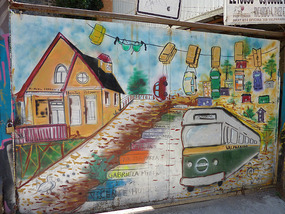
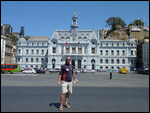




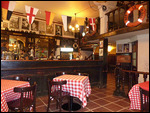
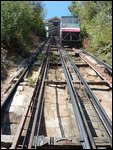
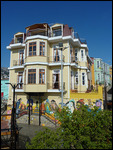
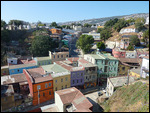
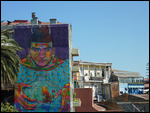
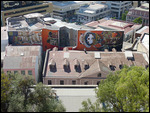
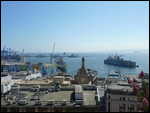


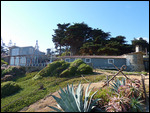

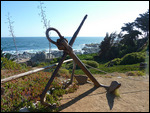
2025-05-23